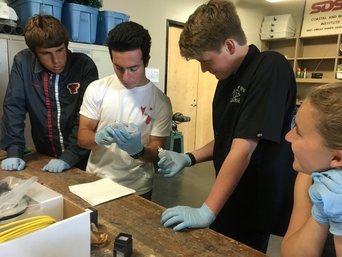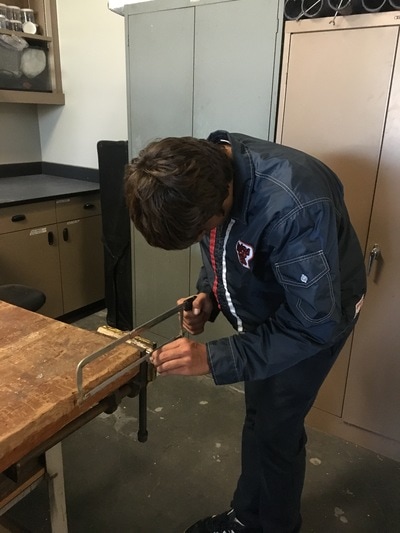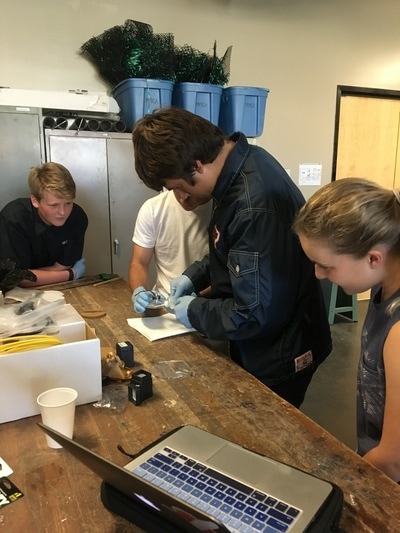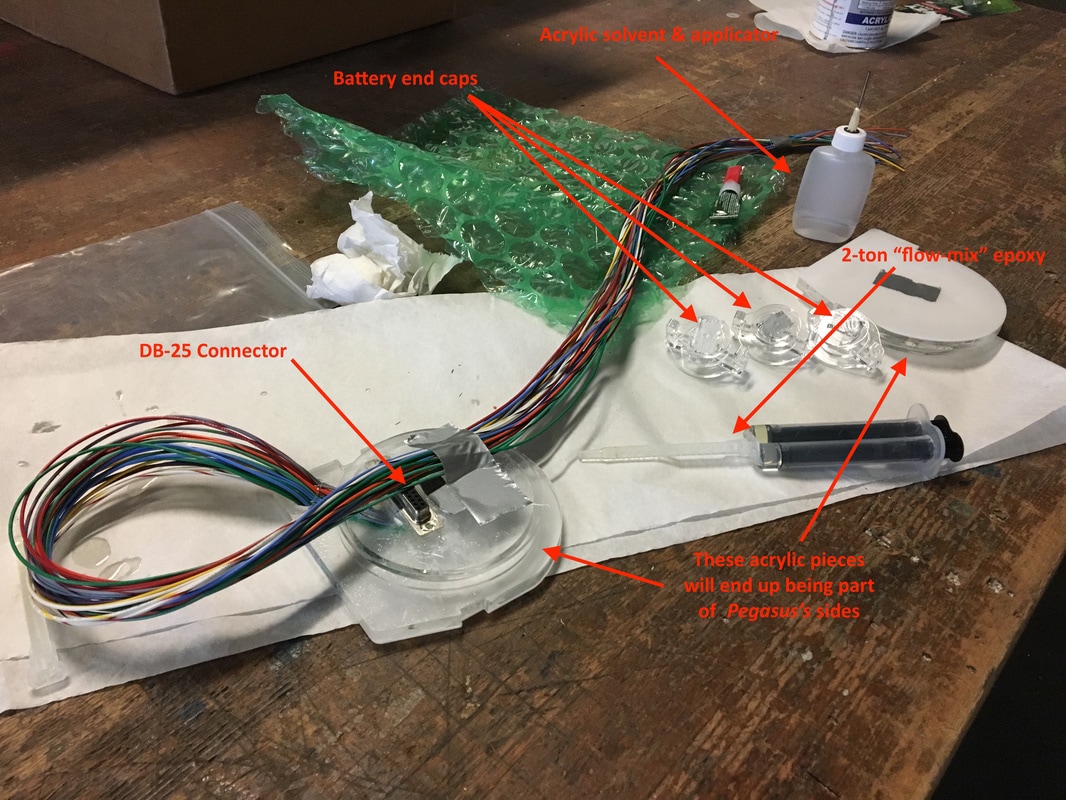 (from left to right) Interns Lorenzo, Jordan, Aaron and Maddy further develop their solvent welding skills (from left to right) Interns Lorenzo, Jordan, Aaron and Maddy further develop their solvent welding skills 4/12/17 San Diego, California After completing our first of five modules, we were ready to get back to work on Pegasus. The second set of instructions saw us using acrylic cement again to solvent-weld some of the internal structures of our ROV together. However, the stakes were a lot higher this time; at a certain point, we’re going to have to start building and using the electronic components of our ROV. After all, the propose of building Pegasus is to gather invaluable data, which includes real-time video from our upcoming dives. For this build we had to saw off the end of a syringe (for use later on), solvent-weld more acrylic, and super glue the DB-25 connector in to place, which is a major connection point for the electronic components. Here’s what Project Pegasus intern Jordan Schultz had to say about today’s build: “We were still using solvent welding to cement the plastic structural pieces together. We made sure to measure at least five times before we did any cementing of the acrylic in order to ensure no errors would occur. Everyone on the team got a turn with the dropper of acrylic solvent. However, we have noticed that it is difficult to control the speed at which the solvent comes out of the dropper. Because of this, we had to be very careful when applying the solvent, especially because it will cement the plastic together in a matter of seconds. We had a few incidents where the water-like substance poured out of the dropper, which lead to gloves being taken off and hands rapidly being washed. Nevertheless, we were able to cement the acrylic together efficiently. An important lesson we learned today was that preparation is key to being successful. If we all show up ready to build but we do not have the proper tools, little can be done. Thus moving forward, it is essential that we plan and prepare ahead of time in order to make certain that we are diligent and productive with our time.” After it was all said and done, we had to apply fast-setting epoxy to water-proof some of the components from this week’s module and last week’s as well. Looking at the individual pieces, it’s hard to believe that after three more modules we’ll be submerging our very own ROV in the ocean!
Be sure to stay tuned, next time the team and I will learn all about electronics and soldering! Cheers, Baron von Urchin.
1 Comment
Steve
4/20/2017 06:04:07 pm
Go Team Pegasus!
Reply
Leave a Reply. |
AuthorPike Spector is currently a Research Operations Specialist with Channel Islands National Marine Sanctuary Archives
August 2022
Categories |




 RSS Feed
RSS Feed
